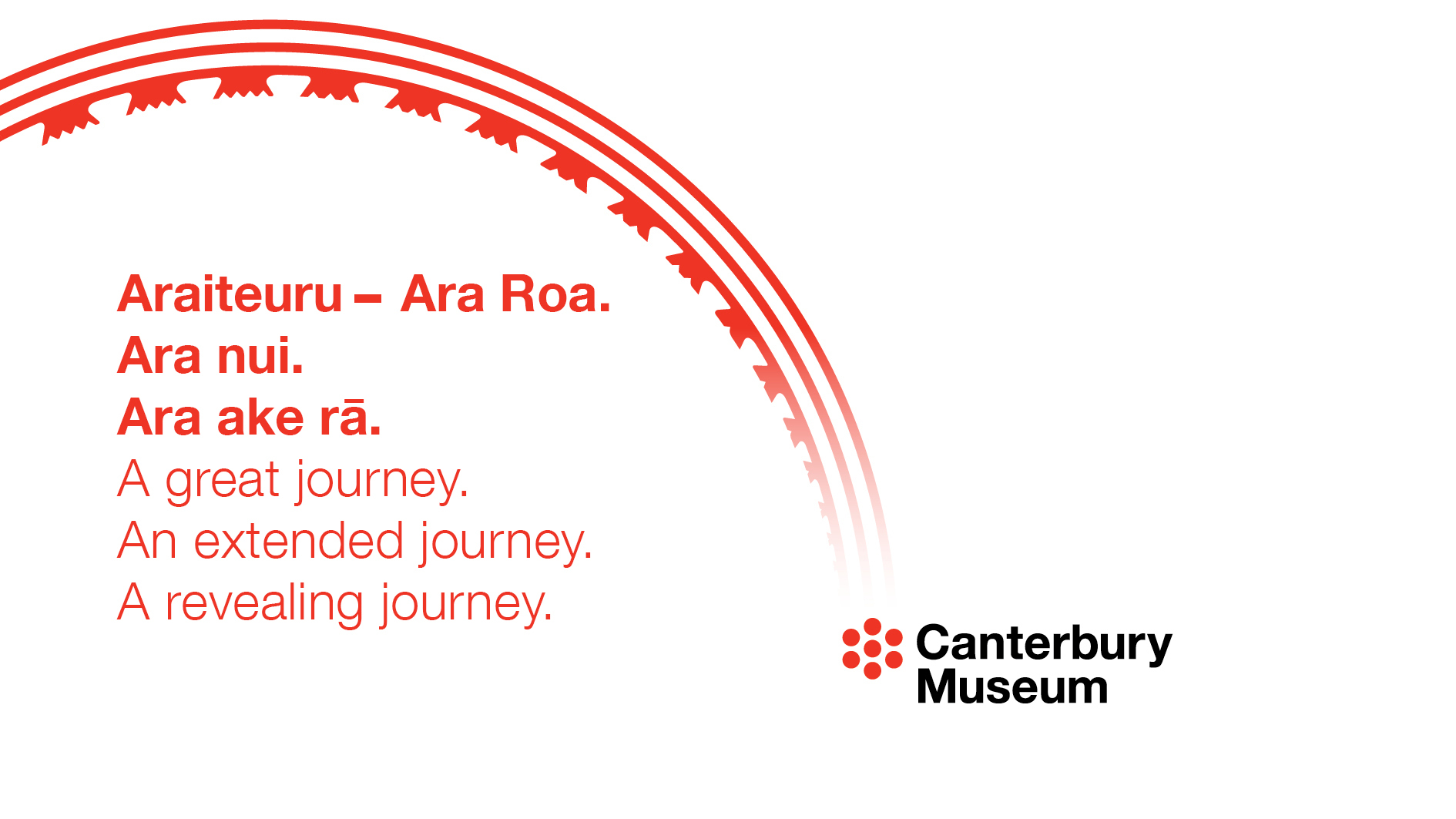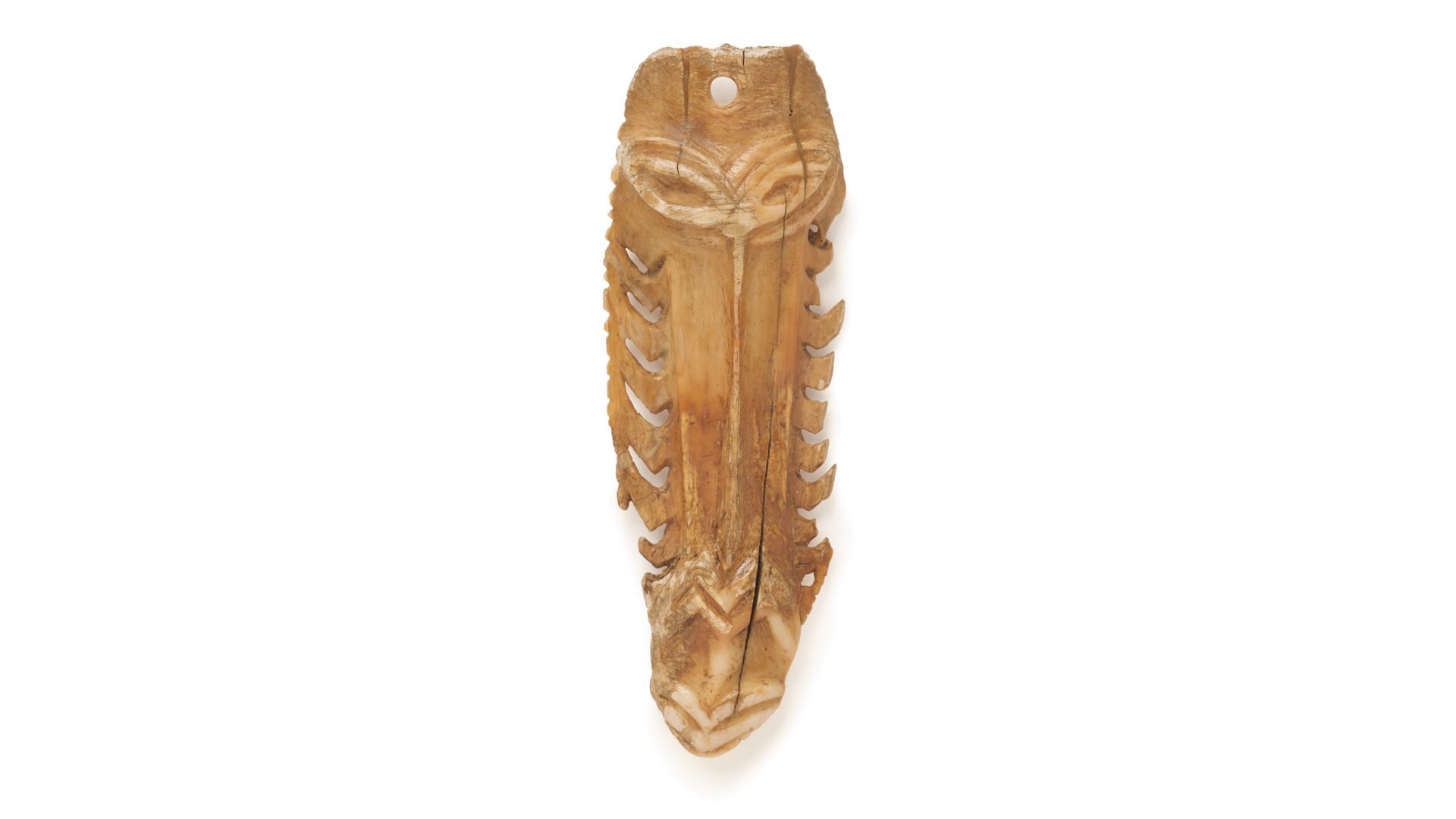Fayne Robinson – a master carver, artist, visionary and storyteller – is one of the outstanding Ngāi Tahu artists who will be making their mark on the new Museum.

Fayne conceived the new Museum branding which was first brought to life on our website by Ngāti Makō artist and designer Morgan Mathews-Hale. The kahukura, symbolic of a rainbow, now sits alongside the rose window-inspired Museum logo. You will increasingly see it as a signal of change in the organisation.
Fayne drew his inspiration from an ancient carved whale tooth in the Museum collection found at Kawate/Little Okains Bay in the rohe of Te Rūnanga o Koukourarata. Thank you to the rūnanga for allowing us to use the image below.
This amulet has paired chevrons down each side and a suspension hole at the top. The main design feature is a stylised human face with eyes, a long thin nose and an open mouth. Viewed from the side a protruding tongue is clearly visible. The features are also slightly reptilian in style – a motif found in other early examples of design in Aotearoa.

The chevroned amulet is a rare and enigmatic form of personal adornment from early Aotearoa New Zealand. Although the particular significance to their wearers has been lost, the skill evident in its execution attests to its value. They are named for the chevrons, or Vs, often resembling stylised legs, typically present on both long edges.
The chevrons in Fayne’s design for Cantebrury Museum represent a link to the past. In te ao Māori, to move forward you must always acknowledge your past. The ancient chevron shapes link us to the past – to the first people of this land and to Araiteuru the voyaging waka that brought them here. Each chevron is reinterpreted as a link to our whakapapa and speaks of arrival – each has a different number of notches symbolising the deepening of those genealogical links to our ancestors.
The chevrons with a single notch represent Waitaha, the first people of this land; two notches denote the arrival of Ngāti Māmoe and three notches the arrival of Ngāi Tahu. The chevrons with four notches acknowledge all the people and races that reside in Waitaha and Aotearoa today.
The three bold concentric circles draw their inspiration from the classical rose window, a prominent feature of the Mountfort-designed buildings weaving together Māori and Pākeha narratives. The circles imitate ripples travelling across water away from their source and beginning their great journey.
Information about chevroned amulets reprinted from House of Treasures: 150 Objects from Canterbury Museum Ngā Taonga Tuku Iho. Canterbury Museum, 2020. Amulet image: Jane Ussher





